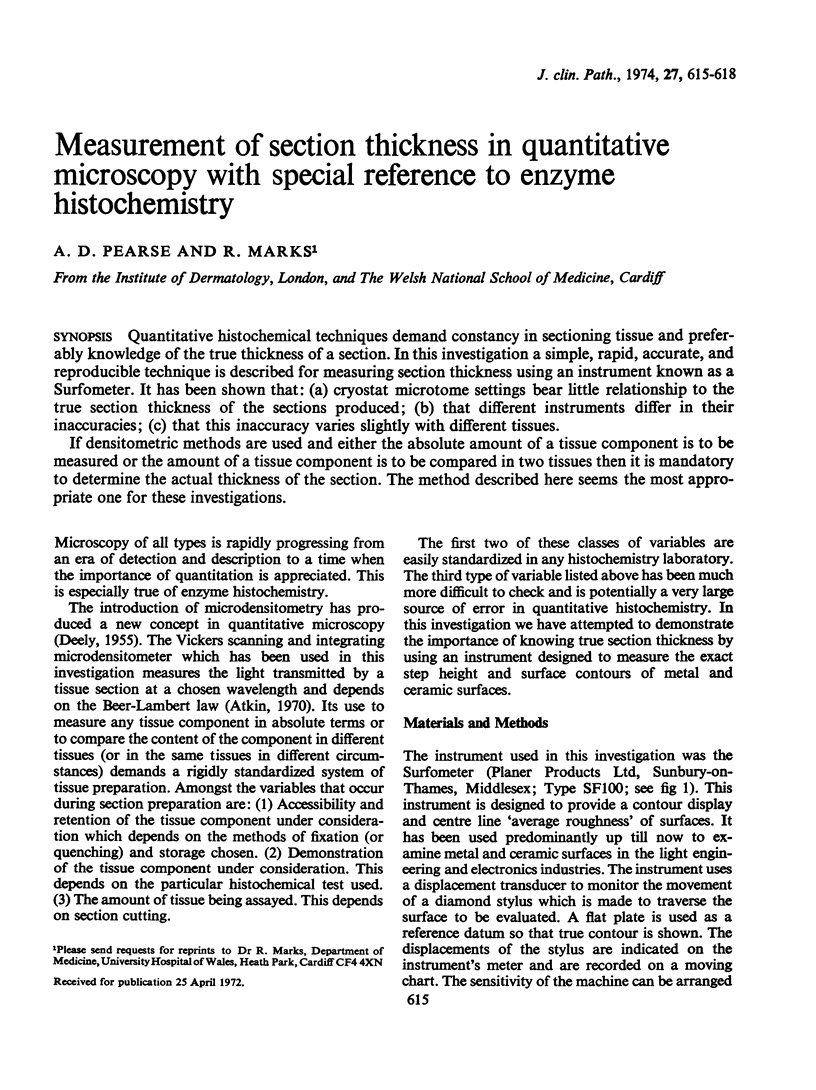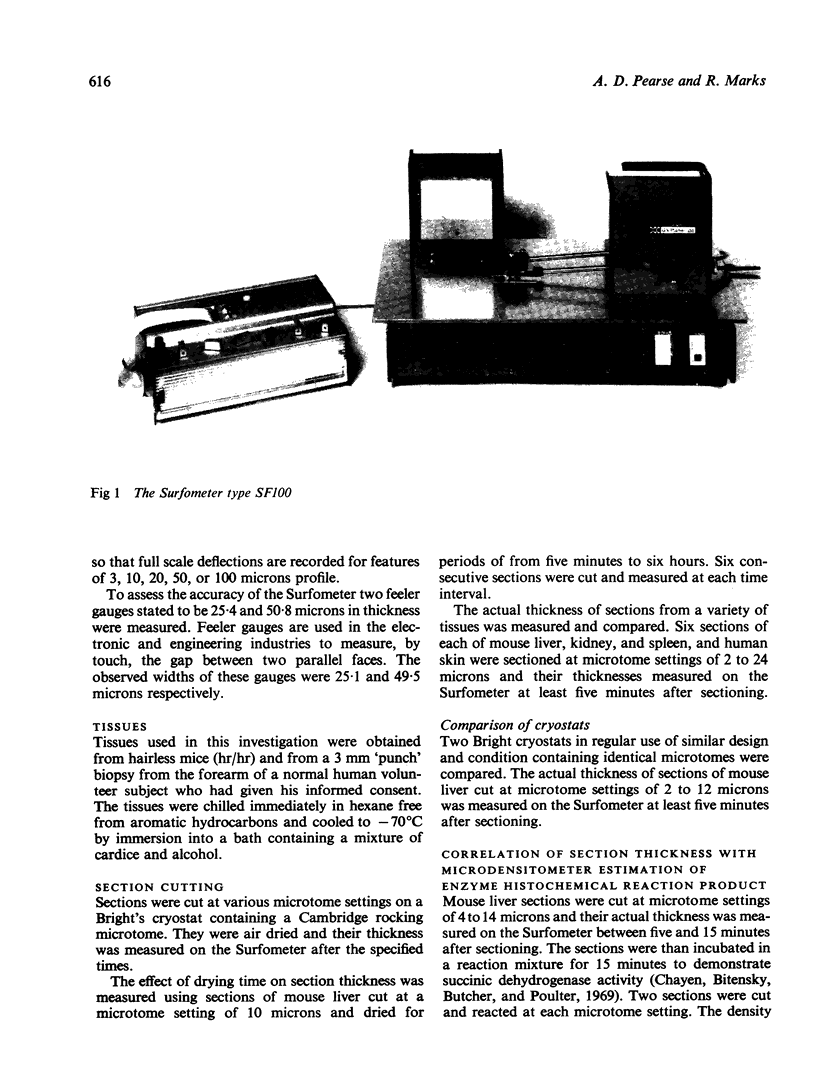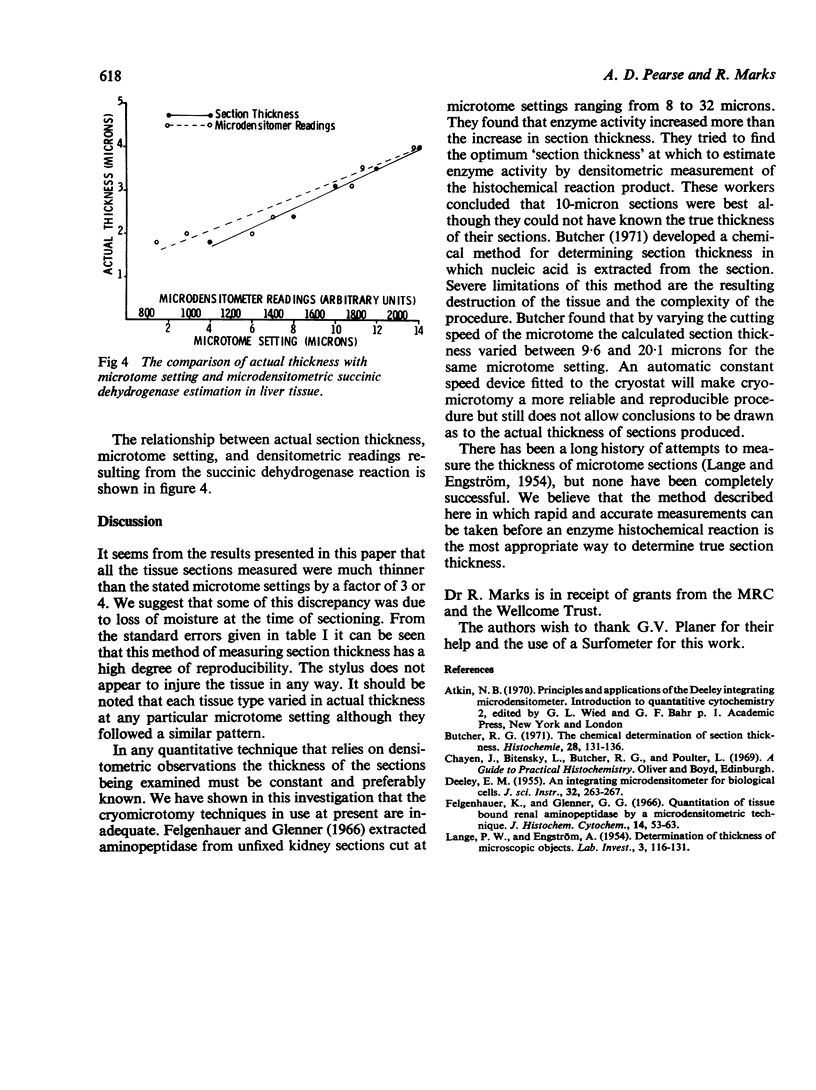Abstract
Quantitative histochemical techniques demand constancy in sectioning tissue and preferably knowledge of the true thickness of a section. In this investigation a simple, rapid, accurate, and reproducible technique is described for measuring section thickness using an instrument known as a Surfometer. It has been shown that: (a) cryostat microtome settings bear little relationship to the true section thickness of the sections produced; (b) that different instruments differ in their inaccuracies; (c) that this inaccuracy varies slightly with different tissues.
If densitometric methods are used and either the absolute amount of a tissue component is to be measured or the amount of a tissue component is to be compared in two tissues then it is mandatory to determine the actual thickness of the section. The method described here seems the most appropriate one for these investigations.
Full text
PDF



Images in this article
Selected References
These references are in PubMed. This may not be the complete list of references from this article.
- Butcher R. G. The chemical determination of section thickness. Histochemie. 1971;28(2):131–136. doi: 10.1007/BF00279857. [DOI] [PubMed] [Google Scholar]
- Felgenhauer K., Glenner G. G. Quantitation of tissue-bound renal aminopeptidase by a microdensitometric technique. J Histochem Cytochem. 1966 Jan;14(1):53–63. doi: 10.1177/14.1.53. [DOI] [PubMed] [Google Scholar]
- LANGE P. W., ENGSTROM A. Determination of thickness of microscopic objects. Lab Invest. 1954 Mar-Apr;3(2):116–131. [PubMed] [Google Scholar]



